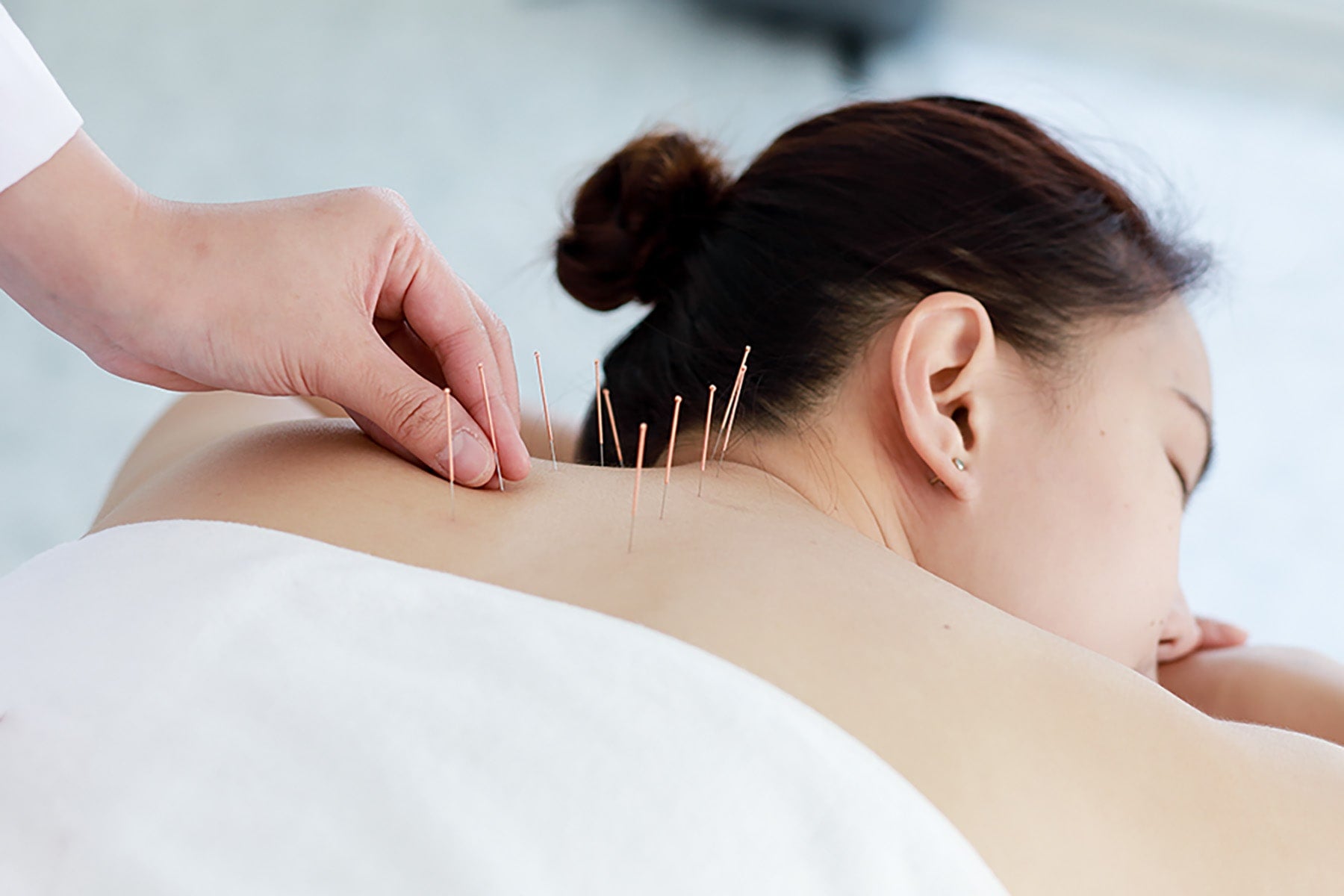The practice of both acupuncture and dry needling are widely used, effective methods of treating pain by the strategic insertion of thin needles into the body. This is often used as an integrated approach to treating a variety of conditions, as well as an alternative method to improve overall health.
How does Acupuncture and Dry Needling work?
The primary differences between the techniques are in the needle placement. In traditional Chinese medicine, “classical acupuncture” positions needles on specific meridian points around the body to help unblock energy flow, also known as “chi”.1,2 It’s believed that restoring these disrupted energy “chi” pathways is the key to avoiding pain and disease and will improve a person’s overall health. The modern practice is known as “anatomical acupuncture” and is delivered by healthcare professionals that are trained in Western medicine, such as physiotherapists, chiropractors, and massage therapists. This method combines the knowledge of anatomy, physiology, and pathophysiology to determine how acupuncture is used as a treatment. The therapists will thoroughly review health history, conduct a physical exam, and select areas along with a meridian based on the anatomical points the clinician is treating.
On the other hand, dry needling is a treatment that applies the needle around or directly at “trigger points” in affected muscles and tissues. Although dry needling isn’t rooted in the same foundation as acupuncture, it has been proven to effectively relieve muscle pain, increase circulation and provide many benefits all the same.3 The needle is manipulated in a way that targets the person’s physiological reaction, restoring muscle length and tone of the muscle to return to their normal movement pattern.
What Acupuncture can treat:
- Chronic pain, such as back and neck pain
- Arthritis and joint stiffness
- Headaches and nausea
- Muscle spasms
- Carpal tunnel syndrome
- Stress management
What Dry Needling can treat:
- Muscle and joint pain
- Chronic back pain
- Inflammation
- Whiplash
- Sports injuries
- Improving range of motion
What does Acupuncture and Dry Needling feel like?
A common concern for those considering dry needling or acupuncture is whether there will be pain. The answer for this will differ from person to person since it depends heavily on individual pain tolerance, but since the needles are hair-thin, it’s often reported that the pain is minimal if there is any at all.
Pressure, aching and mild discomfort are the most common sensations felt through these treatments. While some experience twitching, warmth, or heat, it’s important to stay relaxed and comfortable. It’s also likely for clients to experience some temporary muscle soreness or tenderness following sessions.2
What can I expect at my appointment?
After your arrival, your therapist will carry out an assessment going over your medical history, symptoms, behaviours, lifestyle, and condition to determine the right treatment for you.
In your treatment session, your therapist will insert thin, sterilized needles in the desired location. Then, your therapist will either move and manipulate the needle after insertion or leave the needle in place without moving it around. Lastly, the needles are removed after the allotted treatment time.1 While dry needling will involve directly inserting needles to trigger points located in the affected muscle itself, acupuncture needle points may be far removed from your area of pain.3
Following your assessment, your therapist will discuss with you the suggested length and frequency of treatment, which can be up to an hour once or twice a week. After continuing treatment, you should begin to feel less pain and more energized. It’s important to note that acupuncture may not be for everyone. Your therapist will review your progress with you and discuss what the best course of action is for you.
Learn more about our Acupuncture and Dry Needling services
Sources
